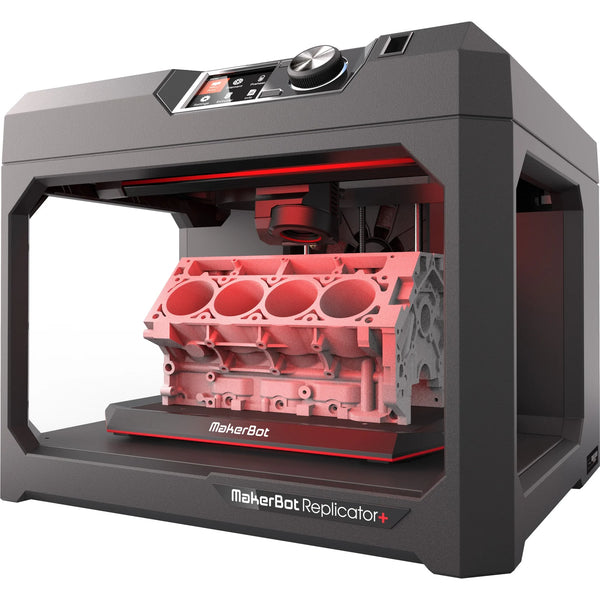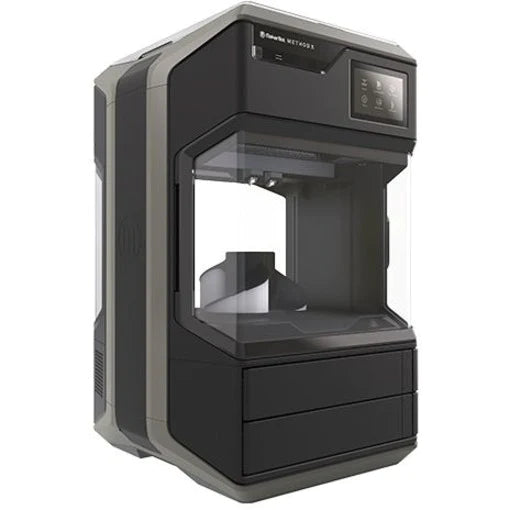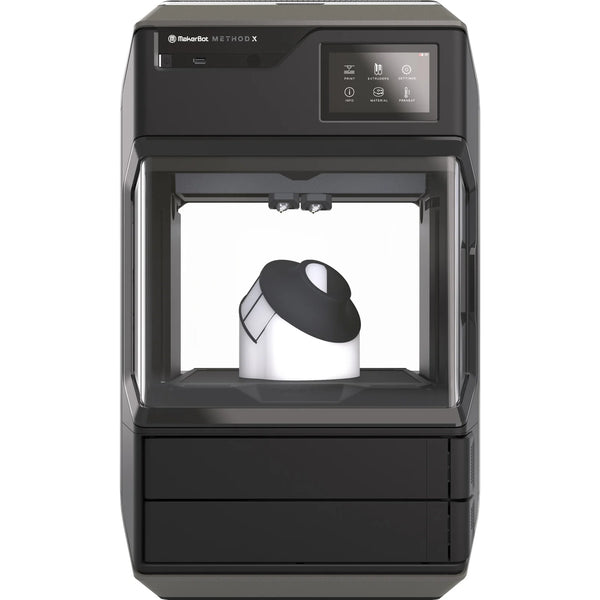
Jun 24, 2023 | Şevval Hazan Haşimoğlu
What Are 3D Printers Used For? Exploring Applications, Benefits, and Top Picks
The Versatility of 3D Printing Technology
3D Printing, also called additive manufacturing, has excellent versatility. It is evolutionary Technology and enables the creation of 3D( 3-dimensional) objects from digitally drawn patterns. It allows the creation of complex, digitally drawn geometries and designs that are nearly impossible to create with modern manufacturing methods. 3D Printing gives design freedom, developing highly complex, customized, and unique objects. Additive manufacturing also provides high production speeds, which supports design testing while lowering the time and cost of creating a product. One of the best features of 3D Technology is its ability to create personalized and customized products. It is essential for on-demand manufacturing and industries such as healthcare. While traditional manufacturing is based on large-scale production, 3D Printing can be used as small-batch production, creating many different business models and personal design creations while, on average, having lower costs with less time spent per product. Additive manufacturing can use many other materials to create products, from really cheap materials to the most expensive ones that traditional manufacturing uses. Depending on what the customer wants or the company wants to build, a product with 3D Printing can have different materials like heat resistance or transparent materials. Traditional Manufacturing needs to work on creating complex products with a single creation process which leads to creating parts of the object separately and then combining them. 3D Technology can create complex products with a single creation process, reducing production costs and saving creators time. 3D Printers also enable local production, eliminating the need for different supply chains or trading restrictions. This feature completely changes how the production and trading of some products work from cost to the end price of the product.

A Brief Introduction to 3D Printing
3D Printing Technology changed the traditional manufacturing process from many production steps into layer-by-layer building, saving manufacturers time and cost. Making a product starts with the digital model created with the support of computer software or scanning 3D blueprints. After the model creation, 3D Printers slice the model into cross-sectional layers. 3D Printers use many different methods to create objects. One of the most popular methods is fused deposition modeling or FDM. FDM melts thermoplastic filament and extrudes it through a nozzle which moves in a controlled route, creating the object layer by layer, slowly building it. We can mention other 3D Printing Technologies like Stereolithography, also known as SLA, which uses liquid resin and is cured by ultraviolet lights. Selective Laser Sintering, also known as SLS, where a laser fuses the powdered material. Each Technology has advantages while having disadvantages while also serving another purpose compared to other technologies. 3D Printing provides an extensive range of products for physical objects such as tools, healthcare products, small statues, and parts for different usages while giving high speeds of customization and prototyping on a small-scale production without needing multiple machines to create physical products, which reduces the cost of the product as well as the time necessary to develop it. 3D Printing completely changed industries such as healthcare, education, architecture, and automation with better sustainability, more customization options, and a supply chain.
The Different Types of 3D Printers
There are many types of 3d Printers, and some of them are:
Fused Deposition Modeling, or FDM or Fused Filament Fabrication (FFF), is one of the most common types of 3D Printers. The production process starts with melting thermoplastic filament and then extruding it through a nozzle onto a plate, building layer by layer. These printers are affordable, easy to use, and have many different models.
Stereolithography, known as SLA printers, is built on a process by which a laser or Ultraviolet light cures a liquid resin. These printers produce the object layer by layer, curing the resin with UV light or a laser. They are also known for highly detailed product creation with a smooth surface finish, mainly used in jewelry or dental production.
Selective Laser Sintering SLS printers commonly use materials such as metals or plastics. They are built in with highly-powered lasers to fuse materials. They spread a thin layer of powder onto the build platform and laser combines the particles to build layer by layer. SLS printers are commonly known for the creation of complex geometries.
Digital Light Processing, called DLP, is similar to Stereolithography printers. The only difference is they use a digital light projector instead of a laser which provides a lot faster printing process. They are also commonly used for jewelry and dental product production.
Binder Jetting printers use a liquid binding agent on a powder bed with a selective depositing mechanism layer by layer. A liquid binding agent is used to bind each product layer together. These printers can use different materials, such as sand or ceramics, to create metal par tor sand-casted objects.

The Benefits of 3D Printing
The most known benefits of 3D Printing are the flexibility of the Technology, which provides customers or businesses to create a product from their custom designs, selected materials for different causes like heat resistant materials, a wide range of the cost of production starting from really cheap materials into expensive lifetime materials, eliminating supply chain worldwide which enables the creation of any product where you live without in need of any specific supply or trading restrictions, revolutionized many industries with cost, time and sustainability efficiency.
Cost and Time Efficiency
Fort cost efficiency, we can start with prototyping cost reduction due to 3D printers using digital designs directly instead of physical designs like traditional manufacturing. 3D printers enable small-batch production, which removes high setup costs and the option to create products without needing other tools. Traditional manufacturing mostly has high setup costs and requires many product creation tools. With the revolutionary 3D Technology, we can have much less waste of materials because 3D printers use the exact amount of materials needed to create a product which leads to spending much less costly price.
One of the most critical features for time efficiency is rapid prototyping,g which provides a lot faster designing, enabling speedier production and immediate modifications of a product. While delivering faster production, 3D printers also allow quick and detailed customization from digital designs compared to traditional manufacturing, where the methods are usually slow and require many tools to customize the product. We can also mention Complex Geometry 3D Printers can use. Traditional manufacturing mainly needs a lot longer process time due to making each part of the product separately and then combining them. 3D printers create the product layer by layer without separating parts or needing different tools.
Flexibility and Design Freedom
3D Printers are one of the most flexible product-making methods providing users with the choice of different materials from sand to metal, many production methods like FDM or SLA for further usage, customized digital design freedom, and the creation of complex geometric objects.
Environmental Friendliness
Compared to Traditional manufacturing, 3D printers are much more environmentally friendly due to having much less material waste, using less power, and much less environmental space to create a product. These printers use the exact amount of materials needed to create an effect making them one of the most environmentally friendly production methods.

Top 3D Printer Picks for Different Needs
MakerBot 900-0002A is one of the best 3D printers for more potent products while having better accuracy while making the product. It uses Patented VEC 110 thermal regulation for a more vital process on the z-axis, making it more accurate. Also, allowing users to print products for weeks without any downtimes with unmatched build quality.
MakerBot 900-0074A is a strong pick for Carbon Fiber products. It has METHOD’s Heated Chamber delivering solid and accurate parts and can pring most complex geometric products with soluble or breakaway support for faster Printing. As well as reliable and precise parts, METHOD’s sealed filament bay provides better print quality and reliability.
MakerBot MP07825 is mainly used for fast and reliable Printing and is one of the strongest. It is swift and easy to use with a significant build volume. It has Smart Extruder+ and many other features to perform better, including a new Grip Surface feature to reduce warping and curling.
Best 3D Printers for Beginners
MakerBot MP07825 is one of the best 3D Printers for beginners with an easy-to-use interface while being one of the fastest and most reliable printers currently available. It uses many features like Smart Extruder+ and MakerBot Mobile for flexible usage. These printers have %30 faster speed and %25 larger build volume compared to older versions. MakerBot MP07825 is also Cloud-enabled, enabling remote control with MakerBot Print or MakerBot Mobile app.
Best 3D Printers for Professionals
MakerBot Method X 3D Printer (900-0002A) is one of the best professional 3D Printers currently out, providing Patented VECT110 Thermal Regulation for more substantial and more accurate production while enabling production for weeks without stopping. With RapidRinse technology built in, metals and composites, as well as polymers, print and dissolve better on MakerBot Method X. 15 have patented features for environmental controls which is more than any other Desktop 3D Printer. Clean Air Dual Filtration System provides safe Printing with any engineering materials.
Best 3D Printers for Educational Institutions
MakerBot Replicator+ (MP07825) provides fast, easy, and reliable printing production for Educational Institutions. It is built with a more significant volume than other versions and has features to offer better performance and flexibility, such as Smart Extruder+, MakerBot Print, and the new Grip Surface. It is Cloud-enabled, enabling remote control with MakerBot Print or MakerBot Mobile app helping educational institutions with quality of life improvements.
Conclusion
3D Printers, called additive Technology, are revolutionary for many industries and production. It is one of the most flexible and reliable production methods with the fastest production speeds, close to zero material waste, and lower production time compared to generic manufacturing.
Harnessing the Power of 3D Printing Technology
Many industries, such as healthcare, jewelry, automotive, and education, use the power of 3D Printing Technology in different ways. 3D Printing revolutionized those industries and made them produce better products with less production time and cost while providing better sustainability.
Check out all you need about 3D Printers from Network Hardwares!

Nog geen reacties.